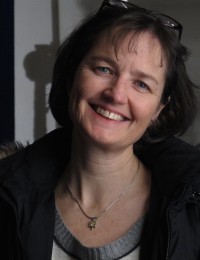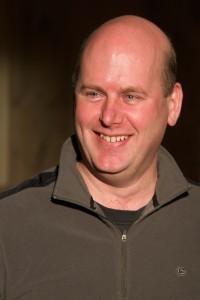PRINCIPAL RESEARCHER
Ali Kazimi (Associate Professor, Cinema & Media Arts) is an award-winning filmmaker, critically acclaimed author and a visual artist.
Kazimi's depth of scientific knowledge through research sets his creative work apart from other artists striving to work in stereoscopic 3D. Since 2009, he has been in an ongoing collaborative with vision scientists, Laurie Wilcox and Rob Allison. Kazimi's creative process has been transformed by science. His name now appears as co-author on scientific papers. In addition, he is one of the handful of researchers/creators who has both expertise in the theory of stereography and is a practicing stereographer.
Kazimi is also among a select group of artists who have made installations in S3D, and has a growing body of work in the medium in Canada. He is a founding member of 3DFLIC. His research & creation in stereoscopic 3D have been supported by the Canada Foundation for Innovation, the New Media Initiative (a partnership between NSERC and Canada Council for Arts) and the Ontario Centres for Excellence.
COLLABORATORS
Laurie Wilcox is a Professor of Psychology, and member of the Centre for Vision Research at York University, Toronto. In addition to basic research (see, Wilcox Lab) on stereoscopic depth perception, Dr. Wicox is actively involved in understanding factors that influence viewer depth perception, comfort and satisfaction when watching S3D media; for example content scaling and cross-talk. She is one of the founding members of the 3D Film and Innovation Consortium (3D FLIC) and her research has been supported NSERC, the Ontario Centres of Excellence, and most recently through a New Media Initiative (partnership between NSERC and Canada Council for the Arts).
Robert Allison is Associate Professor of Computer Science and Engineering at York University in Toronto (Canada). He received his BASc in Computer Engineering from the University of Waterloo in 1991. After graduation he worked as an Electrical Engineer at Atlantis Aerospace in Brampton, Canada, where he designed electronics for flight training devices. Following this he completed a MASc in Electrical Engineering (Biomedical Engineering) from the University of Toronto before obtaining his PhD specializing in stereoscopic vision from York University in 1998. He was on the experimental team for the 1998 Neurolab space shuttle mission and did post-doctoral research at York University and the University of Oxford. Rob works on perception of space and self-motion in virtual environments, the measurement and analysis of eye-movements and stereoscopic vision. His research uses psycho-physical and computational techniques to study how we can reconstruct and navigate the three-dimensional world around us from the two-dimensional images on the retinas. He is recipient of the Premier’s Research Excellence Award from the Province of Ontario in recognition for research in human stereoscopic vision and depth perception. He has also received a McDonnell-Pew Visiting Fellowship, an NSERC Postdoctoral Fellowship and an Australian Research Council International Fellowship.




